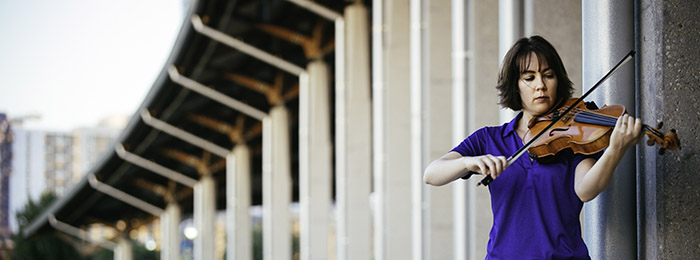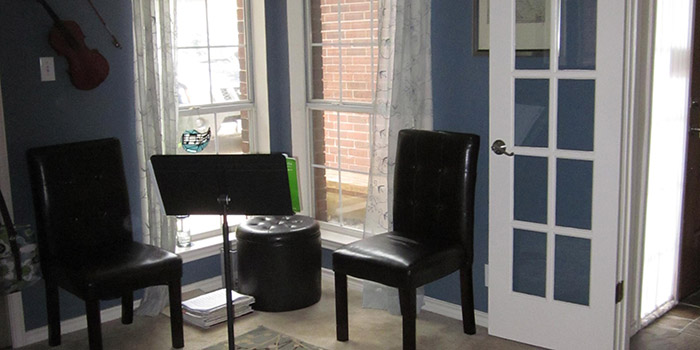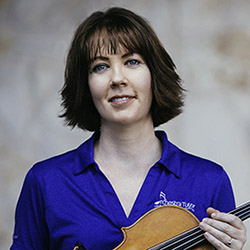
After fifteen years of teaching violin and viola lessons, I recently closed my private studio in Austin, Texas, in order to focus on my new business, Orchestra Tutor. After many moments of, “well, that didn’t work, but hey – this did,” I wanted to share some of my experiences in the hope that they will save you time and energy while you start your own journey to a successful music studio.
1. Establish Your Studio Policies (and Stick to Them)
I fluctuated between different policies for several years before finding exactly what worked for me, so before soliciting work for your own studio, answer the questions below and then put everything in writing for parents and students to review and acknowledge.
Payment Policies
- Will you charge tuition fees by the lesson? Month? Semester? Year?
- Is payment due in advance or after the work is completed?
- Will you charge late fees? Will you offer a discount for paying early or in a lump sum up front?
- What forms of payment will you accept?
- Will you offer payment plans?
- Will you charge fees for returned checks?
Student Expectations
- How often and for how long do you expect your students to practice? Will this vary depending on age and/or capability?
- What preparation is expected for each lesson? What supplies will they need to bring each time?
- What supplies will they need at home?
- How will you enforce these expectations? Will there be penalties or rewards?
Cancelation Policy
- How much notice is required?
- Will you differentiate between excused and unexcused absences?
- Will you offer make-up lessons? If so, how many are permissible over a certain time period? Will they be only on certain days/times?
Keep in mind that, if you want flexibility, your students and parents will expect it on their end as well. However, if you want stability and consistency the best way to get it is by establishing expectations as early as possible.
2. Decide Where You Will Teach
I spent my first couple of years driving everywhere. I taught at music schools, public schools, and everyone’s houses in between and beyond. At the time I thought it was no big deal – I would just claim the mileage on my tax return, and it would all even out in the end. It turns out that’s not true; the tax deduction doesn’t come anywhere near the costs of gas or wear and tear on your vehicle. But more importantly, the time spent driving to lessons is time away from teaching which translates to money you are not getting paid.
Teaching out of your home has definite advantages, but before deciding that this is the best choice for you, make sure you have ample parking that doesn’t inconvenience your neighbors, a designated waiting area for parents and siblings, a restroom they may use without invading your personal space, a safe and secure place for your pets to stay during lessons (remember that not everyone thinks they’re as cute as you do), and sufficient property insurance coverage in case of an accident. You should also think about ways to keep your house presentable at all times and ensure that your family, neighbors, and solicitors do not interrupt your work.

An alternative to using your home as a professional space is to find a nearby school with a strong orchestra program. The benefits of establishing a studio while working directly with an orchestra director are endless and warrant a stand-alone blog entry, but suffice it to say that a nearby school can offer convenience to both you and your students.
3. Choose Your Price Wisely
I started out charging $15 for 30 minutes in the year 2000. My intent was to get as many students as possible and then gradually raise my rates. Within less than two years, I was up to 57 students. Sounds great, right? It was, except that I was spending a significant portion of my earnings on gas and car maintenance, I had underestimated how much time I would spend on administrative work, and I was purchasing a lot more supplies than I had anticipated. In short: don’t undercut yourself. Know what your time is worth and that your experience does matter.
In addition to earning a living, make sure that your rates will cover the costs of doing business, including space rental fees, additional home insurance, and charges associated with recitals, such as printed programs, piano accompaniment, video recordings, and refreshments. Find out what other teachers charge in your area and seek advice from local orchestra directors.
Once you set your price, be consistent with everyone, and don’t forget to leave yourself room for a few raises along the way. Consider charging by the year, semester, or at the very least, by the month, rather than individual lesson. Remember that you are a teacher, and let parents know that your fees should be treated as tuition rather than a pay as-you-go system. Lastly, get payment in advance as often as possible to avoid working for free.
4. Don’t Accept Every Student Who Contacts You
I love teaching sixth grade beginners, but when I first started my studio, I accepted anyone and everyone, from ages four to 76. It was hard for me to shift gears that often, and in retrospect, I don’t think I was a very good teacher to any of my students except those sixth graders. It took longer than it should have for me to realize that they were my target audience – I liked getting them started and watching them progress through the early years of playing, but then I thought they were better off with someone else who could help them flourish at the next level. My advice: become a specialist, rather than a generalist. Narrowing your niche will make you a better teacher, and that positive word will spread quickly!
5. Consistency is Key – Run a Tight Ship
This seems like a no brainer, but it’s surprising how many private teachers cancel, reschedule, or don’t show up to lessons. They wind up with students and parents who treat lessons with the same lack of dedication, which results in fewer (and less productive) lessons, and even fewer long-term students.
Scheduling lessons back-to-back and always starting/ending on time does everyone a favor. Parents appreciate you letting their child out on time so that the rest of their schedule is not impacted. They return that respect by understanding that when they are ten minutes late, you are not expected to go ten minutes over because they know you have another lesson that needs to start on time.
Good luck!
I wish you the best of luck in your new studio endeavor. I look forward to sharing more tips on marketing and maintaining a successful studio on the SmartMusic Blog. For more information on Orchestra Tutor, a website featuring online video tutorials for string students, please visit: https://orchestratutor.com.
 Wendy Devaney took up the violin at the age of 12 (the viola came later). She was soon performing with an El Paso mariachi band with whom she eventually toured the southwest – and France – and recorded several albums. She earned her B.A. in music performance from Texas State University, where she was principal violist in the Texas State Symphony.
Wendy Devaney took up the violin at the age of 12 (the viola came later). She was soon performing with an El Paso mariachi band with whom she eventually toured the southwest – and France – and recorded several albums. She earned her B.A. in music performance from Texas State University, where she was principal violist in the Texas State Symphony.
Wendy has performed and recorded with several mariachi groups, local bands, and classical ensembles and is a guest clinician at the Texas State String Camp. After running a successful private studio in Austin, Wendy founded Orchestra Tutor, a tutorial website designed to help string students.